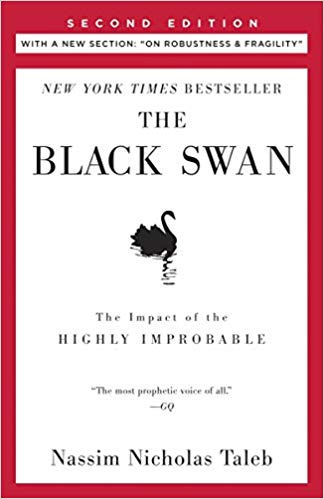

This article is an excerpt from the Shortform summary of "The Black Swan" by Nassim Taleb. Shortform has the world's best summaries of books you should be reading.
Like this article? Sign up for a free trial here .
What is a power-law distribution? How is it useful in describing and predicting events in the real world, which is full of uncertainty?
Power-law distribution is a functional relationship between two quantities in which the relationship remains constant no matter the initial size of the quantities. This relationship is useful in describing events and phenomena that can’t be graphed on a bell curve.
We’ll cover the basics of power-law distribution and look at how it works to accurately describe the world and account for otherwise unpredictable events.
Representing Randomness
Before we look at power-law distribution, let’s look at the problem that it can solve: using bell curves for phenomena that don’t increase or decrease exponentially.
A stunning example of economists’ misinterpretation of the market came in 1998, with the collapse of Long-Term Capital Management (LCTM), a hedge fund that included among its founding partners two Nobel Prize–winners, Myron Scholes and Robert C. Merton (Robert K. Merton’s son). Scholes and Merton won their Nobel Prize for a theory of stock option pricing; the theory, however, was based on a Gaussian model of the market that excluded the possibility of Black Swans.
When markets were disrupted by the Asian financial crisis of 1997 and the Russian financial crisis of 1998—a one-two punch of Black Swans—Scholes and Merton’s theory was revealed for the fantasy it was. The twin crises resulted in a crushing $4.6 billion loss for LCTM in fewer than four months. The firm had to be bailed out by a consortium of private banks, at the behest of the Federal Reserve.
The problem is that economists’ models are thoroughly Platonified: self-consistent, but bearing almost no resemblance to reality. Economists are like philosopher John Locke’s madmen: they reason “correctly from erroneous premises.”
Fractals and Power-Law Distribution
So can the phenomena of Extremistan be modeled—and thereby predicted—at all? Not precisely; but they can be approximated—by the use of fractals and power-law distribution.
Developed by mathematician Benoît Mandelbrot in the 1970s, “fractals” are Mandelbrot’s coinage for geometric patterns that repeat at different scales. Fractals, unlike pure geometric shapes like triangles or circles, are seen quite frequently in nature. For example, a leaf’s veins look like little branches, and a tree’s branches look like little trees: the basic shape of the tree is echoed at the smaller scales.
The reason fractals are helpful in representing Black Swans is that their internal ratios stay constant across scales. Unlike bell curves, in which ratios decline at accelerating rates the further one gets from the average, fractals exhibit no (or mild) acceleration. They obey power laws, which describe a functional relationship between two quantities in which the relationship remains constant no matter what the initial size of the quantities. This is power-law distribution.
Take the European wealth example noted just above. As the wealth number doubled, the incidence decreased by 4x (wealth greater than 1 million: 1 in 62.5; wealth greater than 2 million: 1 in 250; wealth greater than 4 million: 1 in 1,000; etc.). The “power” in this relationship is 2, because 2^2 (2 squared) is 4.
Now, imagine the power was 1: Each time the wealth doubled, the incidence would only decrease by 2x (2^1=2). The probability of extraordinary wealth would increase. This is a power-law distribution.
For Extremistan phenomena, the power laws aren’t known with any certainty, but they can be approximated. Say, for example, you want to assess the risk of a stock portfolio, and you know that, based on past data, the worst-case scenario is a -5% move once every 2 years. With a power of 2—remember that the power is estimated—you can assume that a -10% move will happen once every 8 years (2^2=4) and a -20 percent move will happen once every 32 years. (For scale, in the 1987 crash, the U.S. stock market lost almost 23% of its value, an impossibility according to Gaussian economic models.) With fractal/power-law distributions, a 1000-year flood can become a 100-year one, and a 100-year one can become a 10-year one.
When we begin to analyze Extremistan in terms of the fractal paradigm and the power-law distribution, some Black Swans suddenly become “gray”—they’re not predictable with any sort of precision, but they are, at least, imaginable.
———End of Preview———

Like what you just read? Read the rest of the world's best summary of "Black Swan" at Shortform . Learn the book's critical concepts in 20 minutes or less .
Here's what you'll find in our full Black Swan summary :
- Why world-changing events are unpredictable, and how to deal with them
- Why you can't trust experts, especially the confident ones
- The best investment strategy to take advantage of black swants






